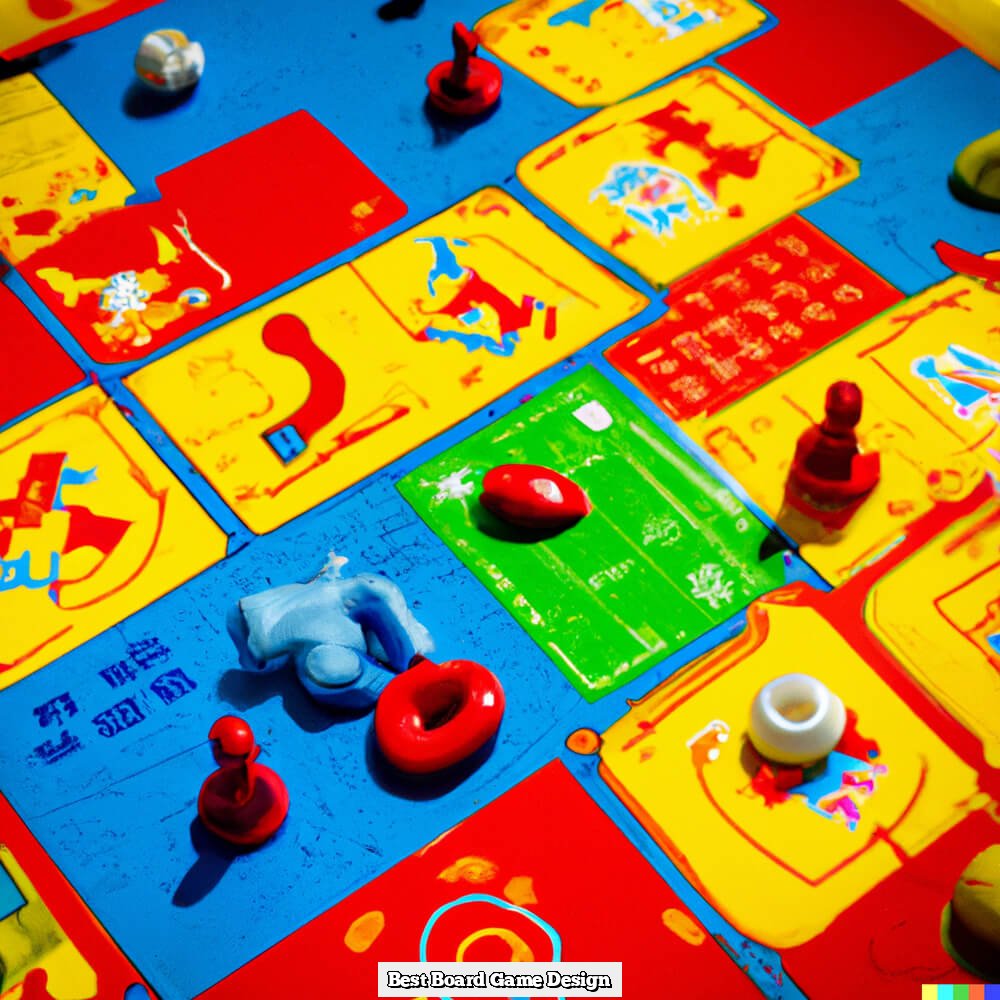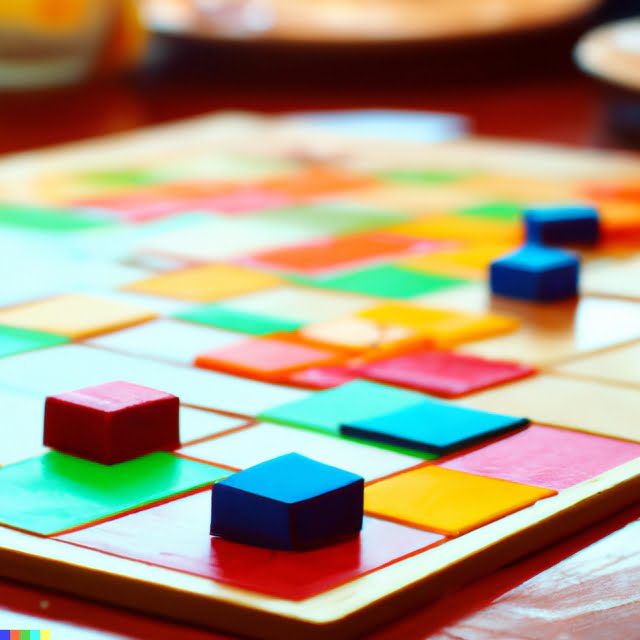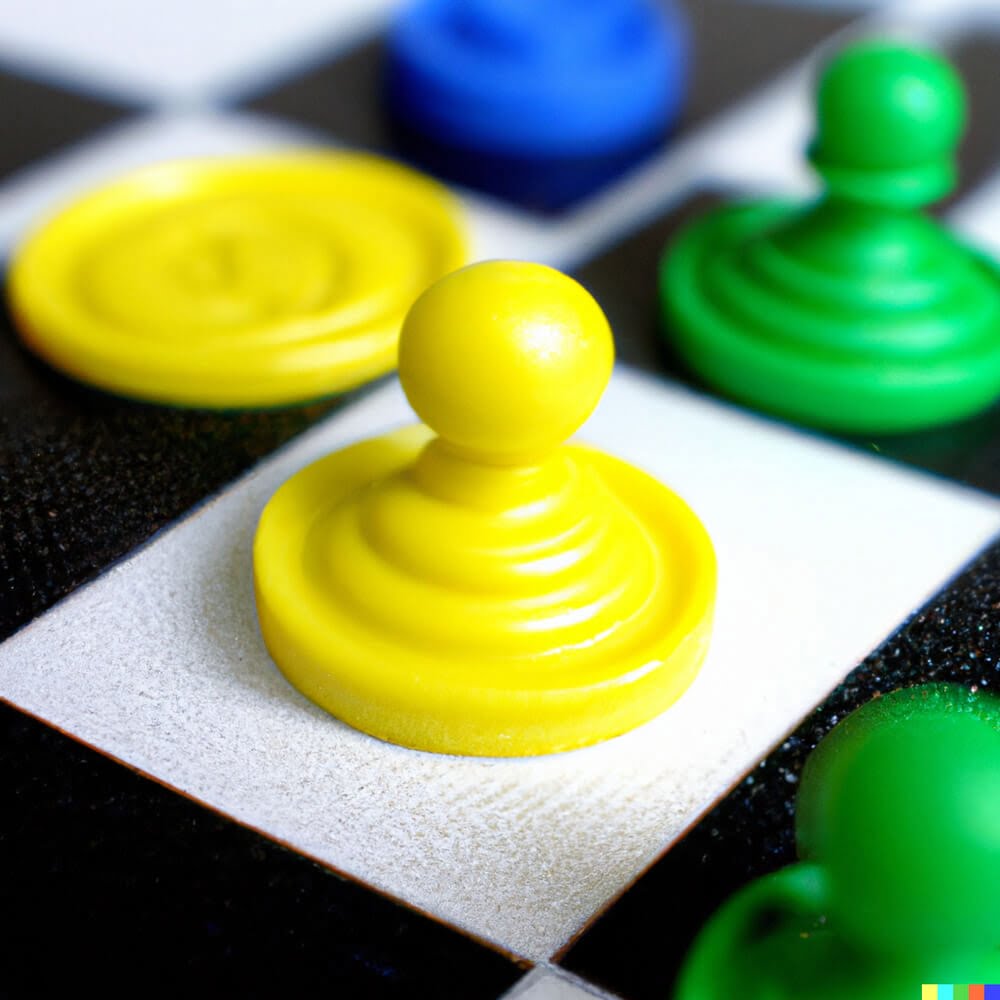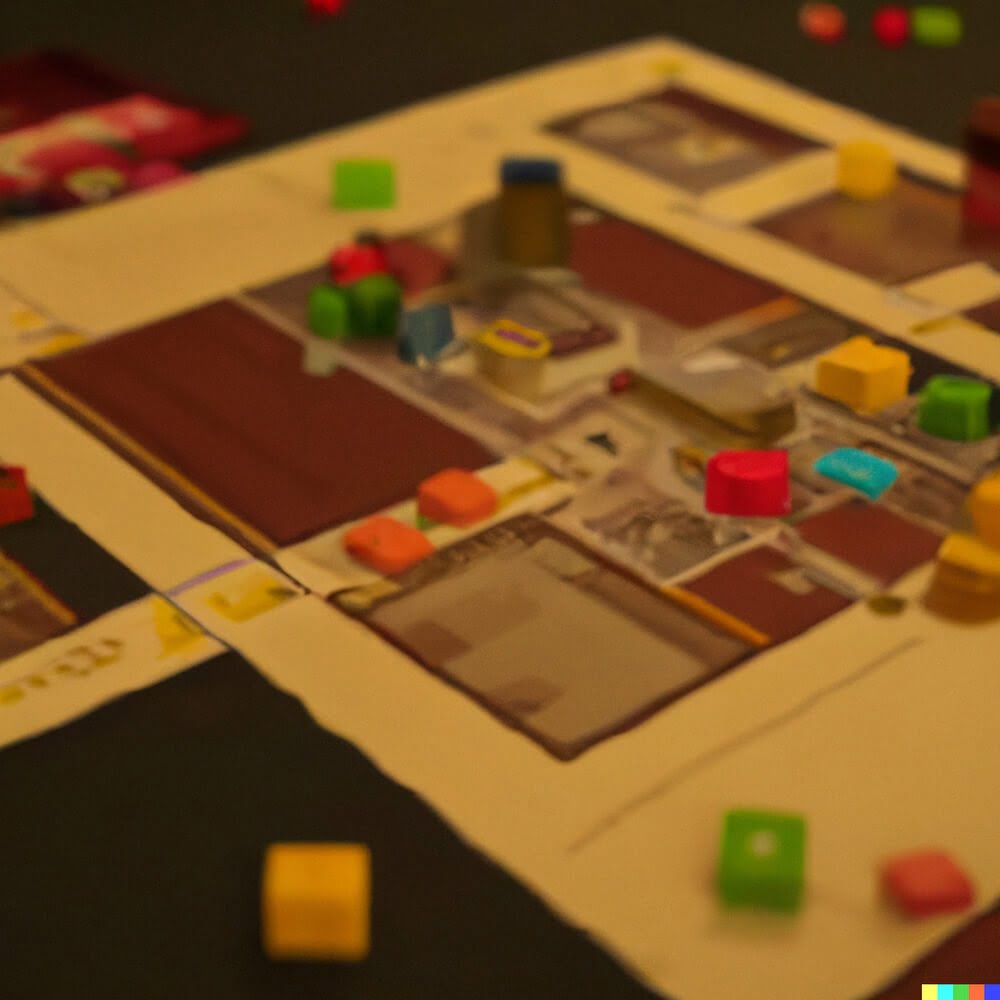Introduction
Board game design is the process of creating a board game from concept to finished product. It involves researching, inventing, and evaluating mechanics and themes that can be used to create an engaging, satisfying game experience. Creativity is key in board game design, as every element should provide a unique challenge or prize that are specific to the type of game being designed. Board game designers must also consider how their game will affect players emotionally and through strategic outcome. To do this,they draw on the expertise of various professionals- such as graphic designers, illustrators, rule specialists, marketers” in order to achieve the best possible outcome for their desired audience. Additionally, feedback from playtesting is integral in designing iterative improvements throughout each stage of development.
Anecdotes/Stories of Designers’ Journeys Through Board Game Design
Creating a board game can be a daunting and intimidating process. Even for professional game designers, the process of bringing an idea from concept to completion can involve winding paths and unexpected turns. That’s why so many designers choose to share their experiences, learnings, and discoveries in board game design blogs.
Board game design blogs chronicle the journeys of game designers”the successes and pitfalls, the breakthroughs and roadblocks. The diverse topics covered in these blogs range from stories of humble beginnings and unsuccessful prototypes to ones outlining the experience of taking a board game all the way to market success. These blog posts tend to provide an intimate look into a designer’s thoughts regarding their work”from pre-production ideas to late night playtesting sessions working out kinks, there isn’t much left unsaid on any given blog post.
In addition to the more general musings on the designing process that feature prominently in board game design blogs, readers are likely to find articles highlighting specific techniques or strategies used by major designers when creating blockbuster games, as well as detailed reviews of recently released titles or about-to-be launched projects. In many cases, reading through these posts provides budding designers with golden nuggets of wisdom such as useful graphic design tips or how-tos on developing meaningful rulesets that flow with thrilling gameplay experiences.
For those interested in pursuing careers in active development for board games, keeping up-to-date with board game design blogs is essential for staying abreast on emerging trends in this multifaceted industry”and if nothing else, it presents an ideal platform for getting inspired directly from those who have been putting in the effort!
Tools, Software and Programs That Enhance Board Game Design
Creating and designing board games is an enjoyable creative activity, one that requires focus and practice to produce the desired results. Many different tools and software are available to aid those in the process of designing a board game. As technology advances, so do board game design programs; with more custom options, more robust functions, more detailed analytics and more vivid 3D models.
Digital programs allow users to quickly create visual prototypes of their concepts including cards, boards and other game pieces. The ability to customize each module means users can swap out pieces, colors and components for their particular project. This enhances a designer’s workflow by providing immediate feedback on tweakable elements in a game before any physical production takes place. Similarly, digital sketching tools such as Adobe Photoshop can be used to develop intricate 2D images or digital paintings representing characters or environments used in board games.
Programs like Tabletopia can be utilized in the early stages of game design as well; it offers players the platform to playtest their rules and mechanics with friends from all over the world digitally or through locally hosted lobbies for high-fidelity testing. Additionally, user-friendly analytics products like BoardGameGeek generate thorough reports based on detailed surveys sent out to potential audiences; these help designers evaluate risk factors associated with certain concepts by analyzing public reactions. Together, these tools promote effective collaboration between the designer team while allowing new ideas to be iterated without any major production costs upfront.
Gallery of Famous Board Game Designs
The Gallery of Famous Board Game Designs is a collection of games that have achieved fame for their inventive and engaging designs. Featuring an expansive selection from classic to modern day favorites, this blog is the perfect place to get inspired to design your own game! Games such as Monopoly, Scrabble, Risk, Settlers of Catan and Clue are included in the gallery, among many others. You can learn how each of these timeless games were designed and their history since they first appeared on shelves. Additionally, you can read reviews written by experienced board game designers on why these games have become so popular over the decades. Finally, the blog provides tips and tricks for successfully designing and pitching a board game project to publishing companies. Here you will find all sorts of advice ranging from conceptualizing mechanics, creating exciting artwork and copywriting rules that minimize confusion. Explore this gallery today and begin developing your own ideas for captivating board gaming experiences!
Examples of Board Game Design Profiles and Companies
Board game design blogs offer profiles of board game designers and companies, informing visitors about what these entities do and how board game designs come to life. Designers are typically profiled with a bio, showcasing their experience in the field, as well as photos of the games they have designed or assisted in designing. Companies’ profiles offer information about their history, product lines, and key figures involved in the creative process. Anytime there are new products released and other updates on existing works, these blogs will provide reviews and insight into why they were created. Additionally, they cover topics such as graphics design trends in board games, strategies for success when creating items for sale or free play use, as well as insights on materials used in production. The blog may also profile popular stores and events where people can purchase different board games or sample them before buying. Ultimately, this type of blog provides resources for both industry professionals, who are able to keep up with the latest trends and tips from those already working in the field; they also serve those just getting started so that they can learn all facets of this area from experienced players.
Steps to Getting Your Board Game Design Noticed
1. Create a blog: Establishing a blog and engaging your audience is key to getting your board game noticed. Your blog should include reviews and updates of your progress and provide content related to game design, such as tips for budding designers, mistakes to avoid, mechanics for new games, or insights from experienced designers.
2. Build an online presence: As with the creation of any product, it’s important to develop an online presence that positions you as an authority within the board game space. Use social media platforms to share your work and connect with others in the industry, including fellow gamers and potential investors. You can also create promotional materials such as trailers and excerpts of gameplay in order to attract more attention to your project.
3. Make sure your game is unique: You need to identify what makes your board game special so that it stands apart from others already on the market or in production. It’s important that you thoroughly research the subject matter and draw upon prior knowledge when coming up with ideas so that you can make sure there isn’t anything similar out there already. Additionally, come up with various ways in which you can promote uniqueness stylistically from a visual perspective using art or cartoons on the packaging itself.
4. Reach out to reviewers: Look for bloggers or influencers that specialize in reviewing board games, who may be willing to do a write-up about yours. Keep track of who has done reviews in the past via blogs, YouTube channels, Twitter accounts etc., tracking comments on those reviews regarding what people do/don’t like about certain aspects of design may give insight into how well-received different elements may be for your own design once released if needed changes are made before release or during its promotion.
5. Networking Events/Conventions: Consider attending events or conventions where board gamers gather including Gen Con, Origins Game Fair etc., This could help build influence having other people try out prototype versions which will generate excitement around the product even before full production is ready while also giving potential players a chance to give feedback on what they like/dislike before full launch further allowing minor improvements prior to mass-production occurring if needed be done due timing constraints associated with large product runs prepared far in advance of wide scale release beyond initial niche testing periods or limited production runs based off pre-orders placed by established retailers usually way before general public release dates are attempted across much wider distribution methods after expected growing fan-base organically spreads through success found first through few proponents like specialty shops devoted solely towards gaming markets which lead away from sample scenario being tested beforehand through pre-orders simulation rounds used when forming decisions regarding how many total copies need made overall during runs compared previous expectations thus further reducing risk associated producing too large amount unprepared items along limited ordering period selected previously ahead launch dates estimation plans organized based off preliminary data analysis done beforehand gathering information earlier discussed when looking reviewers possibly assisting construction process leading deciding if more focus needed elsewhere considering material previously encountered though experimentations needs addressed potentially improving outcomes profitability due lower expected liabilities associated any revised approaches being entertaining resulting higher profits acquired
The Value of Professional Mentorship for Board Game Designers
For aspiring board game designers, professional mentorship can be an invaluable asset. Not only does it provide the necessary technical skills for creating a successful game, but it impart knowledge regarding optimal strategies and techniques for ensuring long-term success in the gaming industry. Furthermore, having a mentor who understands the board game design process provides an added layer of motivation and support that can be far more impactful than designing in isolation or independently with trial and error.
A mentor provides the designer with insight into their field that cannot be gained from any other source; the mentee can ask questions about game development, mechanics, artwork design, marketing, manufacturing etc. that might have never occurred to them on their own, but are definitely essential for success when launching a new board game. Additionally, mentorship encourages greater dedication to meeting development milestones by breaking down intimidating tasks into achievable chunks as well as providing multiple perspectives on both brainstorming ideas and assessing options as they are generated. A mentor also helps challenge assumptions or directions taken while working on a project so that solutions arrive at quickly after careful evaluation of each choice based on experience instead of conjecture alone. Furthermore they help new designers boost their confidence while staying humble by emphasizing proper behavior among other industry professionals which is crucial to career growth in almost any field.
Mentorship also provides access to valuable resources such as contacts within the industry and potential investors who may help finance bigger projects or entire product lines down the road. Overall having a close relationship with someone experienced in your domain gives you access to networks of people dedicated to making every future endeavor successful. From connecting with publishers for mass printing runs to locating qualified creators for graphics or player pieces-support from mentors unlocks doors otherwise not visible from outside knowledge sources like books and videos available online.. With each successful creative product launch anxiety over failure dissipates incrementally which brings greater independence towards solving problems without needs for extensive guidance which is ultimately key for cultivating lifelong habits of evolution in learning if applied correctly under the wing of a seasoned professional who understand what lies ahead in your space.
Social Media Strategies for Board Game Designers
As a board game designer, social media can be an invaluable tool to showcase your work and build an engaged community around your newest creations. If you’re not careful, however, it can also cost you time and money without yielding the desired results. Below are some strategies you can use to ensure that you get the most out of your social media presence:
1. Choose platforms carefully: Before creating profiles on each major platform, consider which platforms will be best for your target audience. Do research about demographics and feature compatibility for each platform.
2. Have a plan: Once you know which platforms to use, create a clear plan on how often and what type information you want to share and stick to it! Posting too infrequently or abruptly changing content strategy won’t build engagement.
3. Engage with others: To make sure that your accounts stay active, don’t only post about yourself; engage with others by sharing relevant content from other creators as well as responding to comments in a timely manner.
4. Take advantage of analytics: Tool such as Google Analytics, Hootsuite or Sprout Social provide insights on when people interact with posts the most, so take advantage of these resources to optimize posting schedules taking into account user preferences.
5. Manage expectations: Building relationships takes time; set realistic timelines for building an audience and track progress against those goals over time to measure success (or lack thereof). These guidelines should help any board game designer maximize the impact of their social media efforts while avoiding common pitfalls!
Open-Source Materials and Collaborative Model for Board Game Design
TinkerToll, a board game design blog, offers an open-source materials system and a collaborative model for board game design. This creates an online platform where people can be inspired by each other to create innovative and interesting designs using the same components. The core concept is that everyone can use these shared components to bring their own creativity and imagination to life in a way that doesn’t prohibit others from enjoying the creativity of the shared materials. Moreover, anyone who contributes to this collaborative model will have their creations featured on the blog as a means of public promotion. This encourages people to explore imaginative uses of existing parts and provide feedback on each other’s work while also allowing potential customers to better understand the unique design elements of TinkerToll’s products.
Conclusion
The board game design blog has been beneficial in highlighting the achievements of board game designers. Through this platform, game designers have made their mark and gained recognition in a crowded market. It has allowed indie designers to showcase their ideas to an international audience and find the support they need to launch successful projects. The blog has become a valuable resource for both aspiring and established professionals who are interested in learning how to design games efficiently and effectively. Furthermore, it provides invaluable insights on the latest trends, best practices, and industry news. Ultimately, the board game design blog has provided a platform for those passionate about the art of game design, facilitating creative collaboration between industry professionals that would have otherwise not been possible.

I love playing all kinds of games – from classics like Monopoly to modern favourites like Ticket to Ride.
I created this blog as a way to share my love of board games with others, and provide information on the latest releases and news in the industry.





